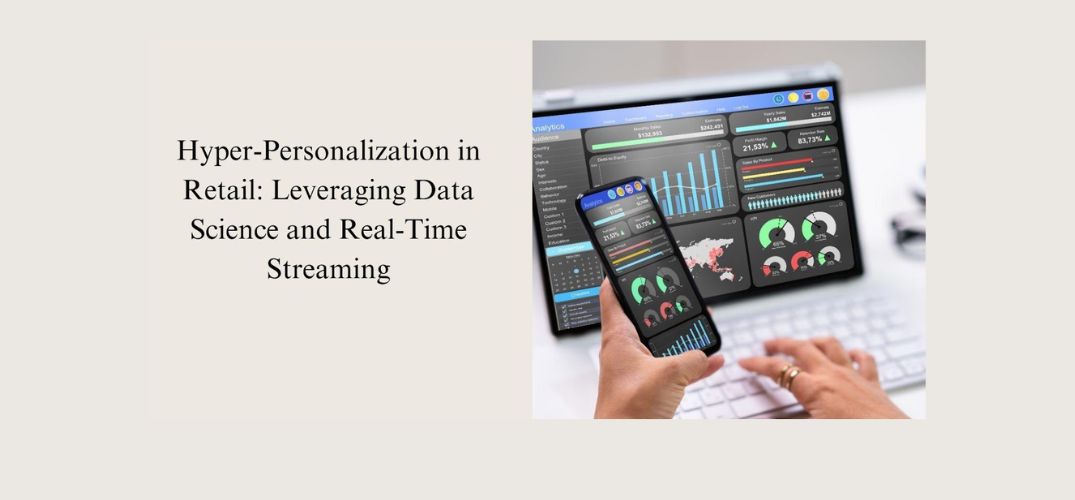The integration of Microservices and Event-Driven Architecture (EDA) is transforming the retail sector, as highlighted by Nitin Saksena in his research. He explores how these architectural approaches empower retailers to deliver highly individualized customer experiences, enhancing both engagement and operational efficiency.
The Shift from Personalization to Hyper-Personalization
In today’s digital retail environment, personalization has become a key strategy for enhancing customer loyalty and driving sales. According to research, companies excelling in personalization generate 40% more revenue than their counterparts. This shift in consumer expectations has driven retailers to move beyond basic personalization techniques like email greetings or product recommendations to more sophisticated, hyper-personalized experiences. These strategies leverage AI, machine learning, and real-time data to create individualized shopping experiences that increase customer engagement and revenue.
Retailers implementing these advanced personalization techniques report a 10-30% improvement in revenue and engagement metrics. The rapid growth of the retail analytics market, which supports these technologies, highlights the increasing demand for personalized experiences. The market is expected to grow from $5.84 billion in 2022 to $18.33 billion by 2028, reflecting the retail sector’s focus on data-driven strategies.
Real-Time Data and AI-Driven Personalization
Real-time data processing is key to hyper-personalization, enabling retailers to adjust experiences based on customer behaviors. AI systems process over 100 attributes in real time, optimizing prices and promotions within milliseconds. These advancements reduce cart abandonment, increase purchase frequency, and create a seamless, engaging shopping experience across channels.
Leveraging Massive Data for Customer Insights
The evolution of hyper-personalization is driven by the vast amounts of customer data retailers now process. Modern systems handle over 1.5 million interactions daily, enabling the creation of detailed customer profiles based on behaviors and preferences. This data helps personalize marketing and optimize inventory management, improving customer satisfaction, operational efficiency, and profitability while reducing costs.
The Technology Behind Hyper-Personalization
Retailers implement hyper-personalization using advanced data science frameworks and AI models to analyze customer behavior and demographics. This enables dynamic adjustments to offerings based on real-time insights, improving product recommendations and promotions. With systems processing hundreds of thousand interactions per second, retailers can quickly respond to shifts in customer behavior and market conditions, maintaining competitiveness in a fast-evolving retail landscape.
Practical Applications in Retail
Real-time data streaming and AI-driven analytics have significantly improved retail operations by enabling personalized experiences across channels. This has led to a 23% increase in cross-channel conversions and a 31% boost in customer satisfaction. Integrating these systems helps reduce cart abandonment, increase order values, and enhance retention, with 76% of customers satisfied with personalized delivery options.
The Financial Impact of Hyper-Personalization
The financial benefits of hyper-personalization are clear. Retailers implementing advanced AI and real-time analytics have experienced a 27.4% increase in revenue, compared to 13.9% for those using basic personalization techniques. The use of real-time personalization has also led to a 31.8% increase in customer lifetime value and a 23.5% reduction in customer acquisition costs.
In addition to direct revenue growth, retailers have improved their marketing ROI by 50% through AI-driven targeting and personalized content. These improvements in efficiency and customer engagement highlight the importance of hyper-personalization for modern retailers.
Future Trends: The Role of Emerging Technologies
Looking ahead, retail personalization will be driven by emerging technologies like predictive analytics, voice commerce, and augmented reality. Predictive analytics will enhance engagement by anticipating consumer behavior, while voice commerce, expected to reach $80 billion by 2025, will grow as a key channel for personalized experiences. AI and machine learning will remain central, enabling retailers to optimize each customer touchpoint. As IoT and social commerce grow, retailers will gather more data to refine strategies, boosting customer satisfaction and loyalty.
In conclusion, Nitin Saksena’s research underscores the transformative potential of hyper-personalization in retail. By utilizing real-time data, AI, and machine learning, retailers can craft highly individualized customer experiences that boost engagement, drive revenue, and streamline operations. As the retail industry increasingly adopts these advanced technologies, hyper-personalization will remain a pivotal factor in fostering business growth and securing customer loyalty in a highly competitive market.



































